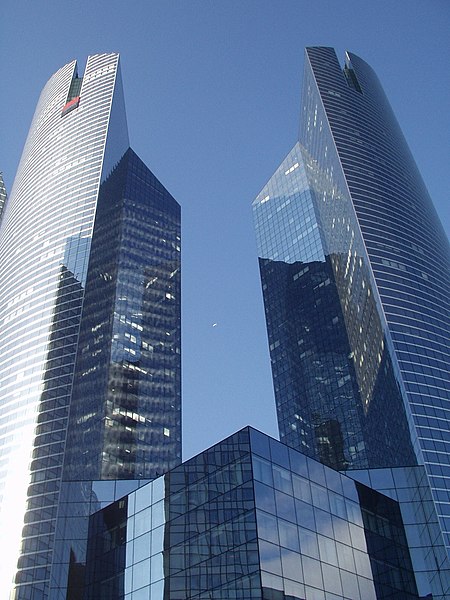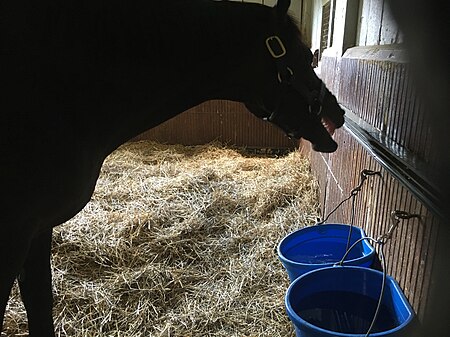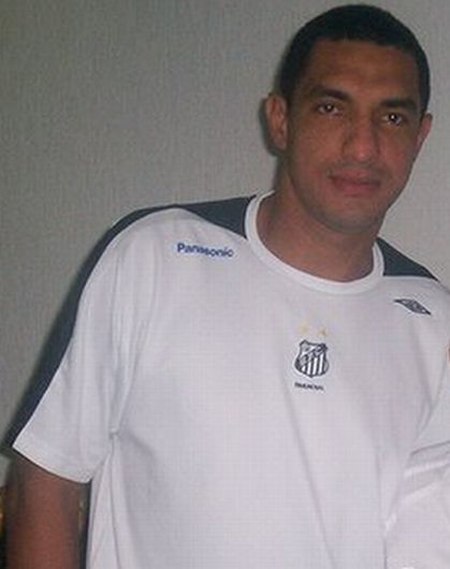Luna 4
| |||||||||||||||||||||||||||||||||||||||||||||||||||||||||||||
Read other articles:

California state historic park Anderson Marsh State Historic ParkThe Ranch House at Anderson Marsh State Historic ParkShow map of CaliforniaShow map of the United StatesLocationLake County, California, United StatesNearest cityClearlake, CaliforniaCoordinates38°55′25″N 122°37′30″W / 38.92361°N 122.62500°W / 38.92361; -122.62500Area1,298 acres (5.25 km2)Established1982Governing bodyCalifornia Department of Parks and Recreation Anderson Marsh Stat…

Gedung Zeiss-Grossplanetarium di Berlin Planetarium adalah gedung teater untuk memperagakan simulasi susunan bintang dan benda-benda langit. Atap gedung biasanya berbentuk kubah setengah lingkaran. Di planetarium, penonton bisa belajar mengenai pergerakan benda-benda langit di malam hari dari berbagai tempat di bumi dan sejarah alam semesta. Planetarium berbeda dari observatorium. Kubah planetarium tidak bisa dibuka untuk meneropong bintang. Proyektor planetarium Carl Zeiss di Planetarium Stuttg…

French multinational banking and financial services company This article is about the French bank. For other uses, see Société Générale (disambiguation). Société Générale S.A.Tours Société Générale, the company's headquarters in La Défense near ParisCompany typeSociété AnonymeTraded asEuronext Paris: GLE CAC 40 ComponentIndustryFinancial servicesFounded4 May 1864; 159 years ago (1864-05-04)Headquarters29 Boulevard Haussmann, 9th arrondissement, Paris (regist…

46-я церемония вручения наград премии «Золотой глобус» 28 января 1989 года Лучший фильм (драма): «Человек дождя» Лучший фильм (комедия или мюзикл): «Деловая девушка» Лучший драматический сериал: «Тридцать-с-чем-то» Лучший сериал (комедия или мюзикл): «Чудесные годы» Лучший мини-…

1989 film by Joseph Sargent This article possibly contains original research. Please improve it by verifying the claims made and adding inline citations. Statements consisting only of original research should be removed. (November 2007) (Learn how and when to remove this message) Day OneGenreDramaHistoryWritten byDavid W. Rintels (teleplay)Directed byJoseph SargentStarringBrian DennehyDavid StrathairnMichael TuckerHume CronynRichard DysartHal HolbrookBarnard HughesJohn McMartinDavid Ogden Stiers…

Group of institutions dedicated to music in Paris, France The Cité de la Musique in Paris The Cité de la Musique (City of Music), also known as Philharmonie 2, is a group of institutions dedicated to music and situated in the Parc de la Villette, 19th arrondissement of Paris, France. It was designed with the nearby Conservatoire de Paris (CNSMDP) by the architect Christian de Portzamparc and opened in 1995. Part of François Mitterrand's Grands Projets, the Cité de la Musique reinvented La Vi…

Сельское поселение России (МО 2-го уровня)Новотитаровское сельское поселение Флаг[d] Герб 45°14′09″ с. ш. 38°58′16″ в. д.HGЯO Страна Россия Субъект РФ Краснодарский край Район Динской Включает 4 населённых пункта Адм. центр Новотитаровская Глава сельского посел…

Сельское поселение России (МО 2-го уровня)Новотитаровское сельское поселение Флаг[d] Герб 45°14′09″ с. ш. 38°58′16″ в. д.HGЯO Страна Россия Субъект РФ Краснодарский край Район Динской Включает 4 населённых пункта Адм. центр Новотитаровская Глава сельского посел…

Навчально-науковий інститут інноваційних освітніх технологій Західноукраїнського національного університету Герб навчально-наукового інституту інноваційних освітніх технологій ЗУНУ Скорочена назва ННІІОТ ЗУНУ Основні дані Засновано 2013 Заклад Західноукраїнський на�…

American-bred Thoroughbred racehorse Go for GinGo For Gin at the Kentucky Horse Park (2021)SireCormorantGrandsireHis MajestyDamNever KnockDamsireStage Door JohnnySexStallionFoaled(1991-04-18)April 18, 1991DiedMarch 8, 2022(2022-03-08) (aged 30)CountryUnited StatesColourBayBreederPamela duPont DarmstadtOwnerWilliam J. Condren & Joseph M. CornacchiaTrainerNicholas ZitoRecord19: 5-7-2Earnings$1,380,866Major winsRemsen Stakes (1993)Preview Stakes (1994) Triple Crown Race wins:Kentucky Derby…

يفتقر محتوى هذه المقالة إلى الاستشهاد بمصادر. فضلاً، ساهم في تطوير هذه المقالة من خلال إضافة مصادر موثوق بها. أي معلومات غير موثقة يمكن التشكيك بها وإزالتها. (مايو 2023) فابيو كوستا معلومات شخصية الميلاد 27 نوفمبر 1977 (47 سنة) كاماكاري الطول 1.87 م (6 قدم 1 1⁄2 بو�…

British politician (born 1947) The subject of this article is standing for re-election to the House of Commons of the United Kingdom on 4 July, and has not been an incumbent MP since Parliament was dissolved on 30 May. Some parts of this article may be out of date during this period. Please feel free to improve this article (but note that updates without valid and reliable references will be removed) or discuss changes on the talk page. Sir Christopher ChopeOBE MPOfficial portrait,…

For the language, see Tidore language. For the sultanate, see Sultanate of Tidore. City in Maluku Islands, IndonesiaTidoreCityCity of Tidore IslandsKota Tidore KepulauanTidore Island, as seen from Ternate Island. Coat of armsMotto(s): Toma Loa Se Banari(The Conscience of the People)Location within Maluku IslandsOpenStreetMapTidoreLocation in Maluku, Halmahera and IndonesiaShow map of Maluku and Western New GuineaTidoreTidore (Halmahera)Show map of HalmaheraTidoreTidore (Indonesia)Show map o…

A New York State Historical Marker commemorating the 1664-1665 Duke's Laws Convention in Hempstead, New York. The Duke of York's Laws for the Government of the Colony of New York were a set of guidelines laid out during the early years of English rule in the Colony of New York.[1] Context In March 1665, Governor Richard Nicolls convened a convention at Hempstead, Long Island to draft legislation for the colony. The code of laws was introduced into Yorkshire[2] which included Long…

Perdamaian BeogradPerjanjian BeogradDitandatangani18 September 1739LokasiBelgrade, Kerajaan Habsburg Serbia (sekarang Serbia)Pihak Monarki Habsburg Kekaisaran Ottoman Perjanjian Beograd, yang dikenal sebagai Perdamaian Beograd[a] adalah perjanjian damai yang ditandatangani pada 18 September 1739 di Beograd, Kerajaan Habsburg Serbia (sekarang Serbia), oleh Kekaisaran Utsmaniyah dan Monarki Habsbrug. Perjanjian tersebut mengakhiri Perang Austria-Turki (1737–39). Referensi Sumber Hoched…

Audrey Hepburn dan Cathleen Nesbitt dalam drama Broadway Gigi (1951), ditulis oleh Anita Koos Gigi (1951) adalah sebuah drama populer, yang ditulis oleh Anita Loos. Drama tersebut berdasarkan pada novel tahun 1945 bernama sama, dan diproduksi dalam bentuk teater Broadway, dimana drama tersebut dibintangi oleh Audrey Hepburn dalam peran utama.[1][2] Referensi ^ Hofstede, David (31 August 1994). Audrey Hepburn: a bio-bibliography. Greenwood Press. hlm. 10. ^ Loos, Anita.…

American actress and singer (born 1987) This article is about the actress and singer. For the album, see Hilary Duff (album). For the sitcom character, see The High Life (British TV series). Hilary DuffDuff in 2019BornHilary Erhard Duff (1987-09-28) September 28, 1987 (age 36)Houston, Texas, U.S.Occupations Actress singer author businesswoman Years active1993–presentWorksFilmographydiscographysongs recordedconcertsSpouses Mike Comrie (m. 2010; div.…

Achmad Solihin Ir Sesko TNIPetahanaMulai menjabat 18 Desember 2023PendahuluKhoirul HadiPenggantiPetahana Informasi pribadiLahir0 Juli 1971 (umur 53)IndonesiaKebangsaanIndonesiaAlma materAkademi Militer (1993)Karier militerPihak IndonesiaDinas/cabang TNI Angkatan DaratMasa dinas1993—sekarangPangkat Brigadir Jenderal TNINRP119300802350771SatuanInfanteriSunting kotak info • L • B Brigadir Jenderal TNI Achmad Solihin., (lahir 0 Juli 1971) adalah seorang perwira tin…

Questa voce sull'argomento atleti francesi è solo un abbozzo. Contribuisci a migliorarla secondo le convenzioni di Wikipedia. Segui i suggerimenti del progetto di riferimento. Robert Chef d'HôtelNazionalità Francia Altezza177 cm Atletica leggera Specialità400 metri piani800 metri piani Termine carriera???? Palmarès Competizione Ori Argenti Bronzi Giochi olimpici 0 1 0 Europei 1 0 0 Vedi maggiori dettagli Modifica dati su Wikidata · Manuale Robert Chef d'Hôtel (Numea, …

County in Utah, United States County in UtahSanpete CountyCountySanpete County CourthouseLocation within the U.S. state of UtahUtah's location within the U.S.Coordinates: 39°22′N 111°35′W / 39.37°N 111.58°W / 39.37; -111.58Country United StatesState UtahFoundedJanuary 31, 1850Named forChief SanpitchSeatMantiLargest cityEphraimArea • Total1,603 sq mi (4,150 km2) • Land1,590 sq mi (4,100 km2) •&#…

